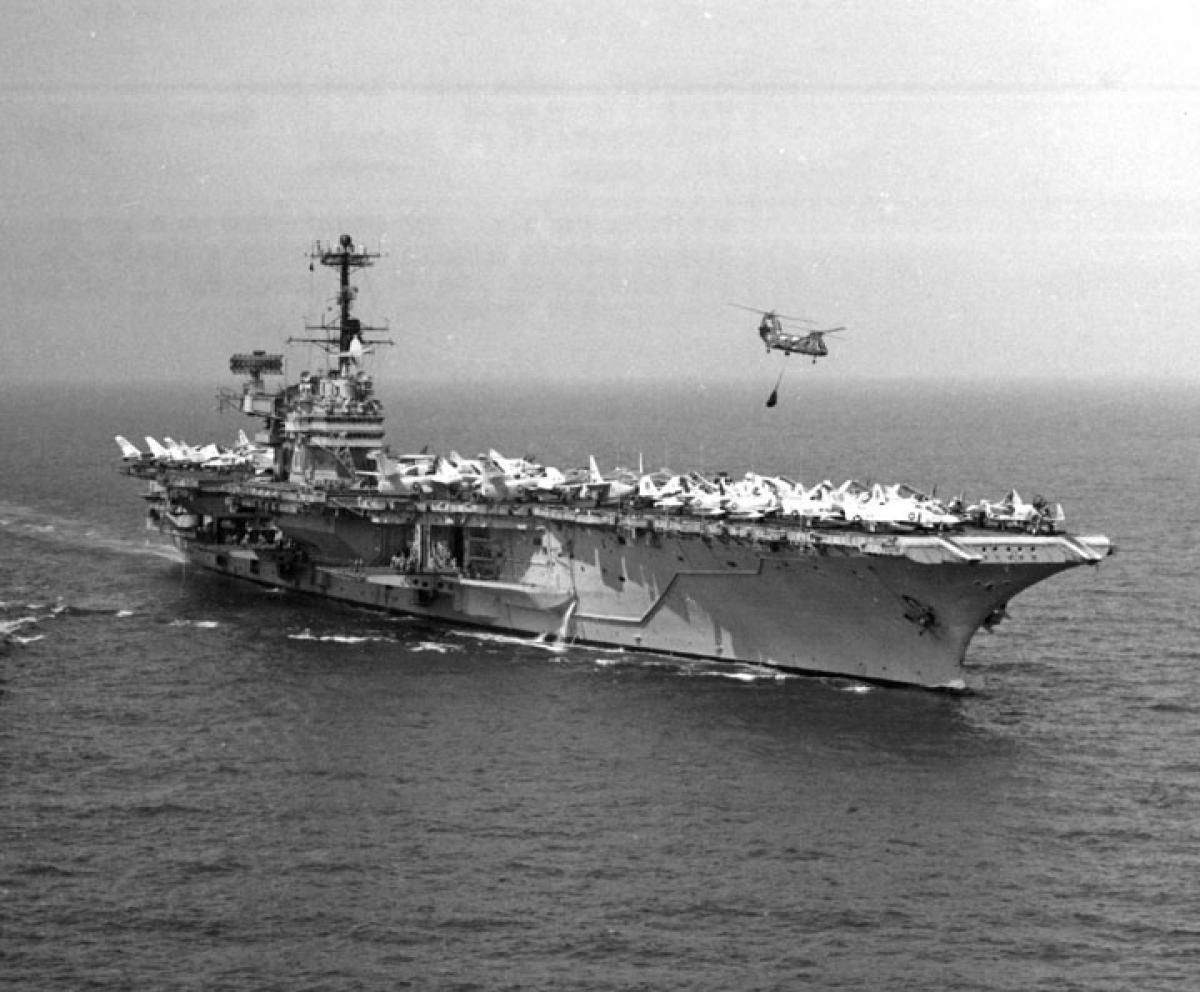The following is an entry in a personal journal—called “The Log” by its author—kept by a young ensign serving as Assistant G-Division Officer in the carrier USS Independence (CVA-62), deployed to the Mediterranean in the fall of 1970:
21 SEP – Rumors are flying; things are happening. JFK is on her way to join Sara[toga] and us. King Hussein has in no uncertain terms asked for American air strikes immediately as well as subsequent troop intervention—this stemming from the fact that Syria has entered the conflict with an armored invasion. G DIV had a major load again—this time we loaded anti-tank weapons. (THE PLOT THICKENS). The ordnance is at this moment (2130) hanging on the aircraft (mostly A-4s with some A-6s). I have a strong feeling that an air strike is coming soon.
He was wrong. No airstrike was launched, and G-Division subsequently set about removing the antitank weapons from the aircraft and returning them to the ship’s magazines many decks below. As is often the case with young people who have not yet come face-to-face with the realities of war, the ensign recorded his disappointment, lamenting that “we are only going to be a presence in this situation and are not going to do anything.”
But what this young officer did not fully appreciate was that being a “presence” was of immeasurable significance, that this giant warship with such immense potential power had played a role on the world stage with ramifications that resonated not only in the troubled Middle East but in the halls of the Kremlin and the White House. What he viewed as anticlimax was instead the achievement of strategic objectives in a manner that would have pleased Sun Tzu, the ancient philosopher of war who famously said, “The supreme art of war is to subdue the enemy without fighting.”
While nodding off during sea-power lectures at officer candidate school, this neophyte had apparently missed the part explaining that an effective navy does so much more than engage in combat. He apparently was awake during the part about projecting power ashore but failed to appreciate the importance of the Navy’s other vital missions—much less tangible, but every bit as important—of sea control, deterrence, and forward presence.
What had occurred those many years ago is what is known to historians as “The Jordanian Crisis of 1970,” a complicated situation that involved Iraq, Syria, the Palestinian Fedayeen, Israel, the United States, the Soviet Union, a terrorist organization known as “Black September,” and, of course, Jordan. At the height of the crisis, the Jordanian Army was able to repulse an armored incursion by Syria; Jordan’s success would have been seriously jeopardized had the Soviets intervened on the side of their Syrian ally.
The latter was prevented by a strong rhetorical stance by President Richard Nixon made credible by a great deal of potential power in the form of the U.S. Sixth Fleet providing that “presence” noted in the ensign’s “Log.” Several attack aircraft carriers, a strong amphibious element, and many more units of the Sixth Fleet positioned in the eastern Mediterranean provided a show of force that allowed the United States to achieve its regional objectives while preventing this highly volatile situation from exploding into something much worse. An important element in the outcome of this delicate situation was the time factor, because this persuasive force had been accumulated much more rapidly than other elements of U.S. or Soviet power could be brought to bear, proving the importance not only of presence but of forward presence—something a deployed navy provides so effectively.
In the end, an important Middle Eastern ally had been preserved while keeping the Soviet Union at bay. As the crisis abated, “The Log” turned to other subjects of great importance, such as assessing the next liberty port for the possibility of conquests of a different sort.



